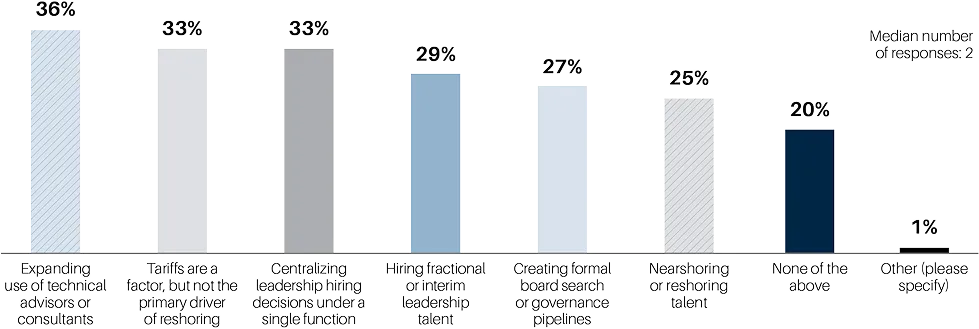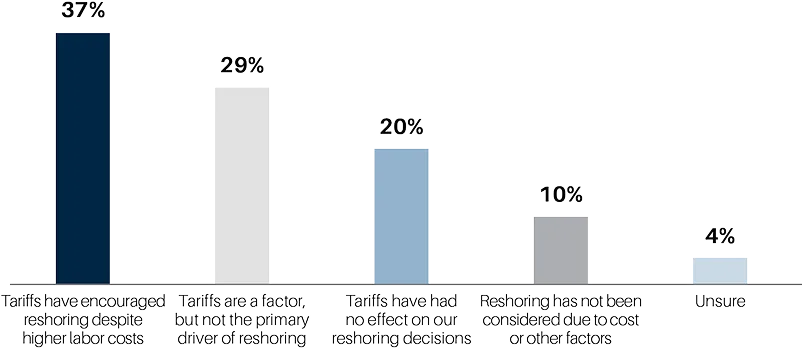
Why tech leadership hiring is entering a period of unusually rapid change
This article is an excerpt from Riviera Partners’ Future of Tech Leadership 2025 report, based on insights from more than 1,000 senior technology leaders. Download the full report for complete data, charts, and frameworks.
The leadership hiring crunch
While individual contributors remain the top hiring priority for most organizations, the real bottleneck is at the top of the org chart. Nearly 4 in 10 companies say C-suite hiring will be “very challenging” in the year ahead, followed closely by functional leadership roles.
Even when companies know the kind of leader they need, execution is often the problem: Under-resourced recruiting teams, slow workflows, and compensation mismatches are all making it harder to secure critical talent.
Organizations hiring priorities and challenges over the next 12 months

“Only 42% of companies rate their internal recruiting function as very effective at hiring tech leaders.”
Why internal recruiting isn’t keeping pace
Internal teams often lack the infrastructure, bandwidth, or networks needed to compete for high-demand leadership talent. Venture-backed companies are especially exposed, with limited in-house recruiting resources and compensation packages that don’t match later-stage expectations.
See how your org measures up—download the full report of 1,000+ tech leaders.
Creative hiring models are on the rise
In response, companies are experimenting with new approaches:
- Fractional and interim executives to cover gaps quickly.
- Technical advisors or consultants to provide targeted expertise.
- Centralized hiring models that pool resources across business units.
- Reshoring and nearshoring strategies to balance risk and efficiency.
These shifts reflect a larger truth: the traditional one-size-fits-all hiring model is breaking down, replaced by more flexible, adaptive solutions.
Companies are actively exploring or implementing the following hiring or team development strategies

External pressures are reshaping talent strategy
Hiring challenges aren’t just internal. Tariffs and geopolitical risk are influencing where companies place their leadership teams. Forty percent of U.S. firms say tariff policies directly drove decisions to reshore roles, even at higher labor costs. Meanwhile, nearly half are still expanding international teams to maintain access to specialized talent.
Tariffs influence on company’s decision to reshore

Why high-readiness companies have the edge
According to Riviera’s Organizational Design Readiness Index, high-readiness organizations are more than twice as likely to implement multiple hiring strategies (2.5 vs. 1.2 on average). They also:
- Centralize leadership hiring (56% vs. 33% overall)
- Maintain board/advisory pipelines (60% vs. 27% overall)
- Grow international teams more aggressively (45% vs. 36% overall)
In short: Companies that invest in leadership infrastructure are better positioned to win in an increasingly competitive hiring environment.
FAQ: Tech leadership hiring in 2025
Every company is buying AI tools, but few are building the leadership and organizational muscle to use them effectively. As a result, a competitive divide is opening: Companies that experiment vs. companies that execute.
This article is an excerpt from Riviera Partners’ Future of Tech Leadership 2025 report, based on insights from more than 1,000 senior technology leaders. To explore the full findings, charts, and frameworks, download the complete report here.
Want to know where your company stands? Take our AI Organizational Readiness Quiz to get your custom score and see how you compare to peers across VC, PE, and public companies.
Next Up → Explore how tariffs and global risk are reshaping talent strategies
Back to → The Future of Tech Leadership